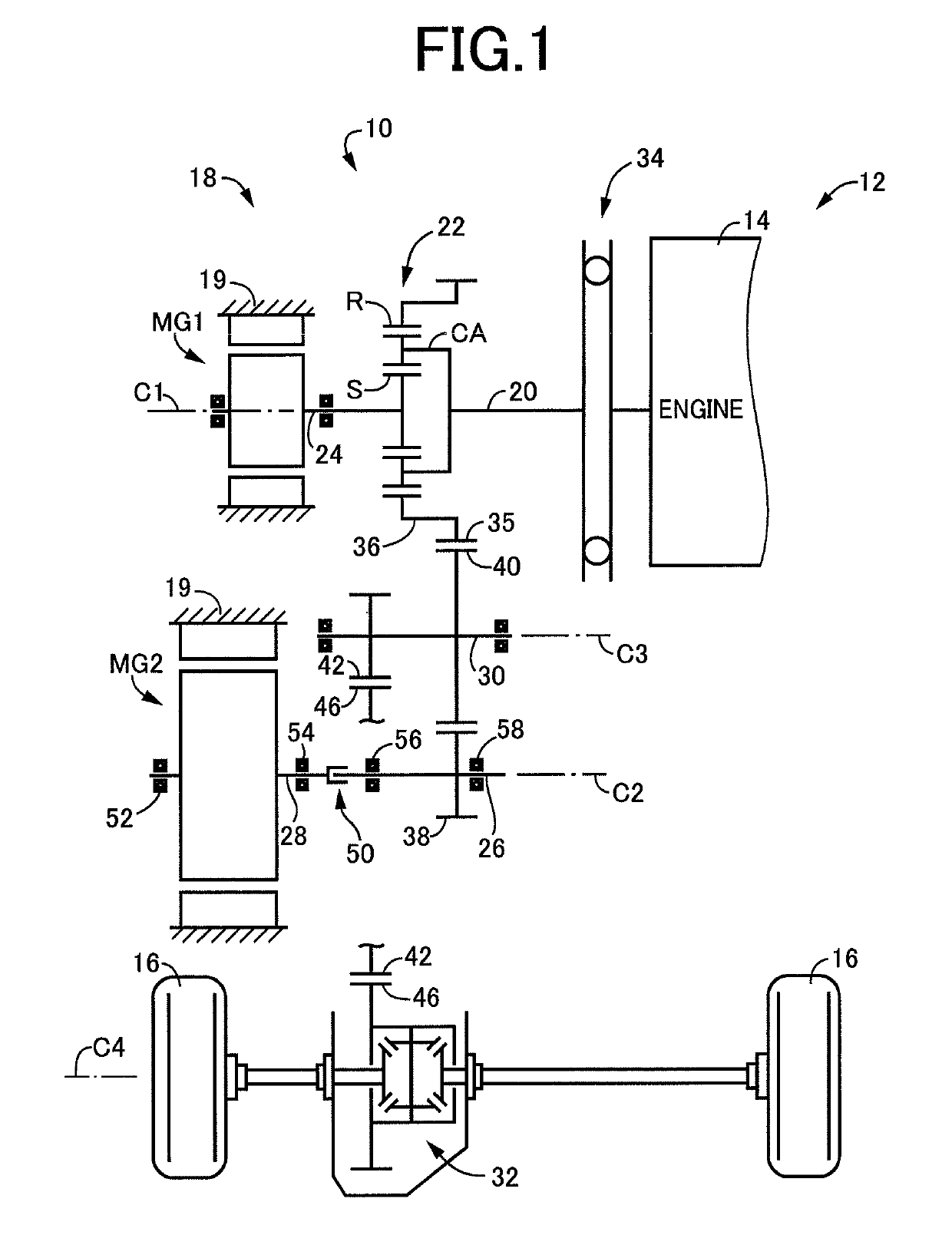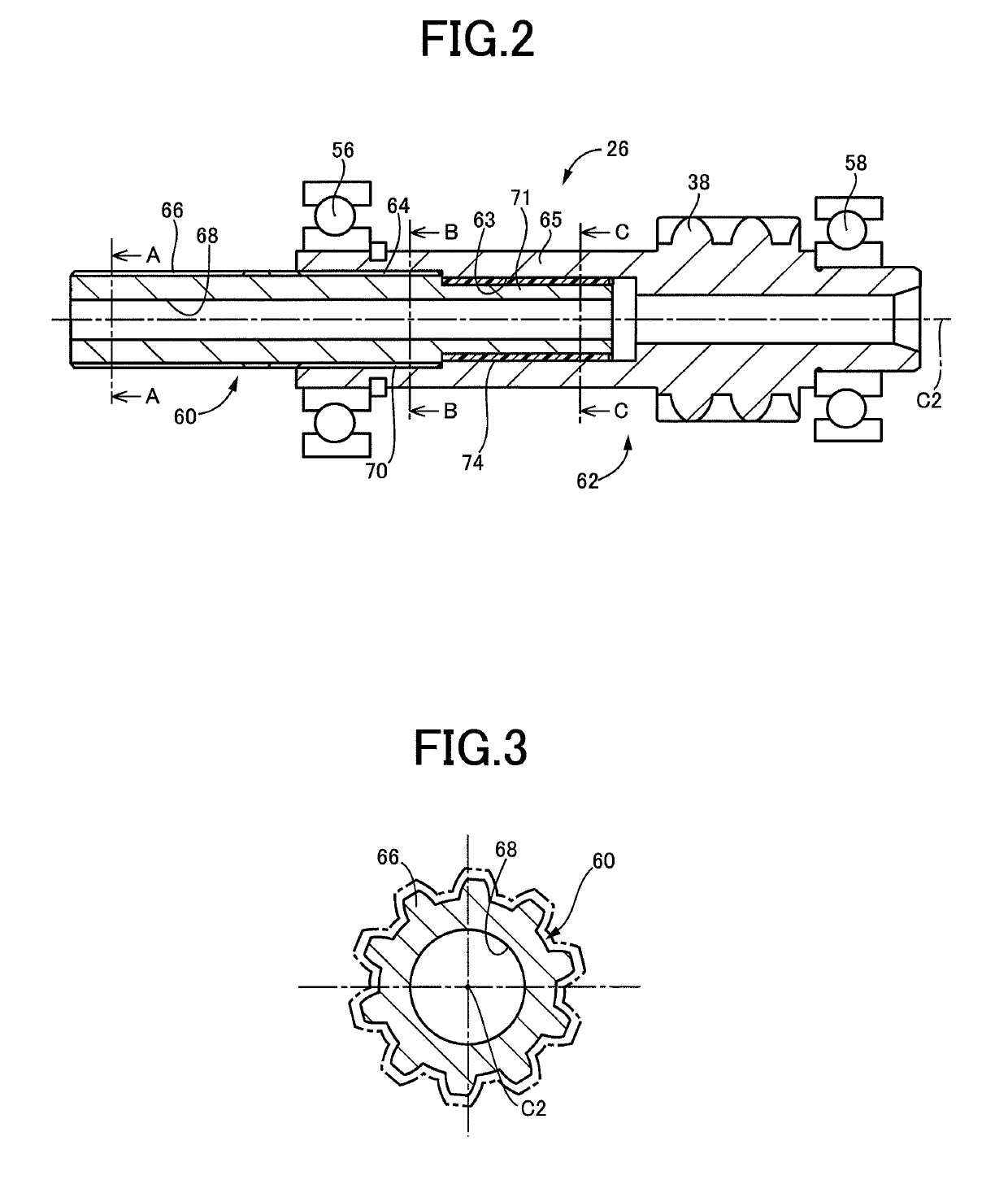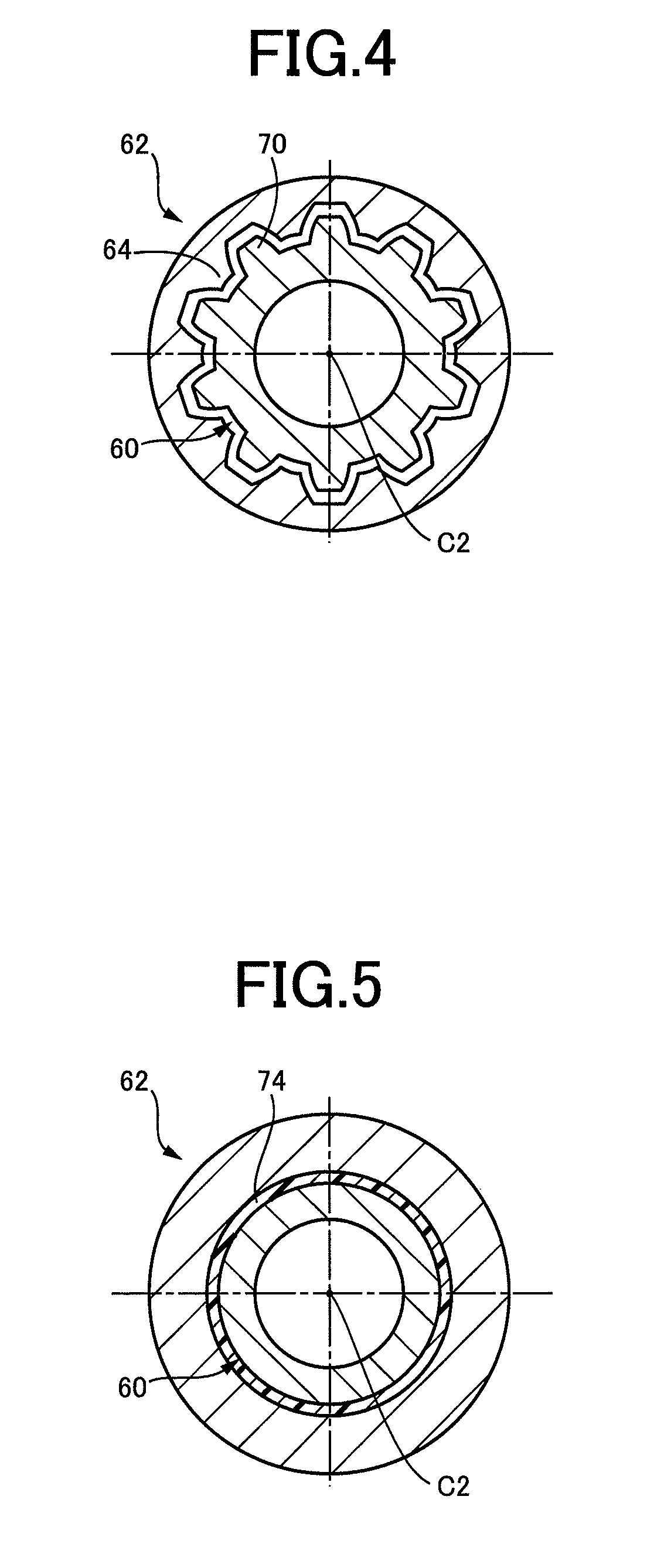Support structure for rotating shafts of vehicle
a technology for supporting structures and electric motors, which is applied in the direction of hybrid vehicles, couplings, transportation and packaging, etc., can solve the problems of reducing the butting force of the spline teeth, reducing and preventing the application of excessive loads to the bearings. , to achieve the effect of reducing the butting noise of the tooth due to a torque variation transmitted from the engine, preventing application, and limiting the performance of the elastic member
- Summary
- Abstract
- Description
- Claims
- Application Information
AI Technical Summary
Benefits of technology
Problems solved by technology
Method used
Image
Examples
first embodiment
[0035]FIG. 1 is the schematic view for explaining a structure of a drive system 12 provided in a hybrid vehicle 10 (vehicle), to which the present invention is applicable. The drive system 12 includes an engine 14 such as a known gasoline engine or diesel engine functioning as a vehicle drive power source (drive power source), and a vehicular power transmitting system 18 (hereinafter referred to as “power transmitting system 18) through which a drive force of the engine 14 is transmitted to drive wheels 16. The power transmitting system 18 has four rotary axes (C1-C4) parallel to each other, which are disposed within a stationary member in the form of a casing 19. The first axis C1 is coaxial with an axis of rotation of the engine 14, and an output shaft 20, a power distributing mechanism 22, and a first rotor shaft 24 of a first electric motor MG1 are rotatably supported on the first axis C1. A speed reduction shaft 26 and a second rotor shaft 28 of a second electric motor MG2 are ...
second embodiment
[0057]FIG. 7 shows the structure of a speed reduction shaft 100 in another embodiment of this invention. FIG. 7 is the cross sectional view showing the overall arrangement of the speed reduction shaft 100. FIG. 8 is the cross sectional view taken along line A-A of FIG. 7, while FIG. 9 is the cross sectional view taken along line B-B of FIG. 7. As shown in FIG. 7, the speed reduction shaft 100 is constituted by a first rotary shaft 102 spline-coupled to the second rotor shaft 28 of the second electric motor MG2, and a second rotary shaft 104 having the speed reduction gear 38 formed thereon. The first rotary shaft 102 is fitted in an axial bore 105 formed in the second rotary shaft 104.
[0058]The first rotary shaft 102 has an external spline teeth 106 formed on an outer circumferential surface of its axial end portion remote from the ball bearing 58 (on the side of the second electric motor MG2), so that the first rotary shaft 102 is spline-coupled to the second rotor shaft 28 through...
third embodiment
[0068]FIG. 10 is the cross sectional view showing the overall arrangement of a speed reduction shaft 150 in a further embodiment of the invention.
[0069]As shown in FIG. 10, the speed reduction shaft 150 is constituted by a first rotary shaft 152 spline-coupled to the second rotor shaft 28 of the second electric motor MG2 and a second rotary shaft 154 having the speed reduction gear 38 formed thereon. The first rotary shaft 152 is fitted in an axial bore 155 formed in the second rotary shaft 154.
[0070]Unlike the speed reduction shaft 100 described above, the speed reduction shaft 150 in the present embodiment is provided with buffer members described below, respectively between the first rotary shaft 152 and the second rotor shaft 28, between the first rotary shaft 152 and the second rotary shaft 154, and between the ball bearing 58 supporting the speed reduction shaft 150 (second rotary shaft 154), and the casing 19. The speed reduction shaft 150 will be described with respect to it...
PUM
 Login to View More
Login to View More Abstract
Description
Claims
Application Information
 Login to View More
Login to View More - R&D
- Intellectual Property
- Life Sciences
- Materials
- Tech Scout
- Unparalleled Data Quality
- Higher Quality Content
- 60% Fewer Hallucinations
Browse by: Latest US Patents, China's latest patents, Technical Efficacy Thesaurus, Application Domain, Technology Topic, Popular Technical Reports.
© 2025 PatSnap. All rights reserved.Legal|Privacy policy|Modern Slavery Act Transparency Statement|Sitemap|About US| Contact US: help@patsnap.com



